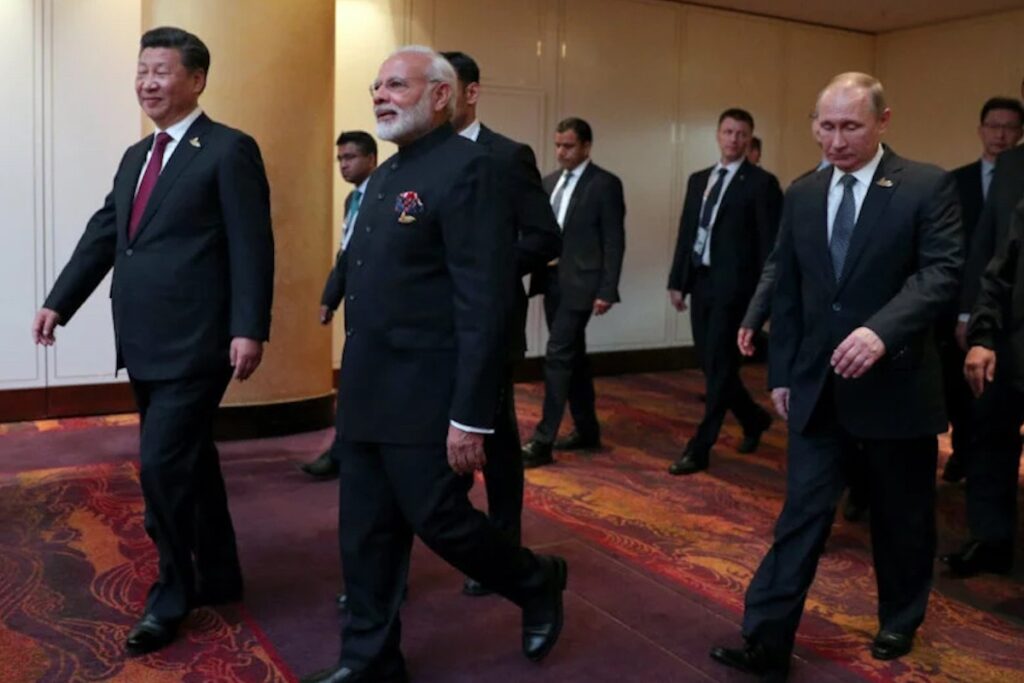The grand spectacle unfolding in Tianjin this week—with Vladimir Putin and Narendra Modi flanking Xi Jinping at the Shanghai Cooperation Organization (SCO) summit—appears to herald China’s ascendant global leadership.
Western commentators are understandably alarmed, viewing this convergence as validation of Beijing’s multipolar world vision and evidence of America’s declining influence under Trump’s disruptive trade policies.
But this narrative, compelling as it seems, obscures a more complex reality: Xi’s supposed diplomatic triumph may actually expose China’s strategic limitations rather than demonstrate its growing strength.
Fragility behind the facade
Consider the circumstances that brought Modi to Tianjin. India’s Prime Minister isn’t there because he suddenly embraced Chinese leadership or abandoned strategic autonomy.
He’s there because Trump’s 50% tariffs on Indian goods left New Delhi with little choice but to diversify its diplomatic options. This is reactive geopolitics, not proactive alignment.
Similarly, Putin’s presence reflects Russia’s isolation rather than China’s magnetic appeal. Moscow needs Beijing more than Beijing needs Moscow—a dependency that fundamentally undermines any notion of genuine partnership between equals.
Xi may have orchestrated this gathering, but he’s essentially hosting a support group for countries wounded by American policy decisions. This is hardly the foundation for sustainable global leadership.
The most striking aspect of Xi’s summit theater is its inherent contradiction.
China simultaneously positions itself as the champion of sovereignty and non-interference while actively seeking to reshape the global order—a fundamentally interventionist ambition that mirrors the very American hegemony it claims to oppose.
The military parade commemorating World War II’s end serves as a perfect metaphor for this paradox. By rewriting historical narratives to emphasize Chinese and Russian contributions over Western Allied efforts, Xi engages in precisely the kind of ideological projection that Beijing criticizes when America does it.
The parade isn’t just about military might; it’s about memory manipulation—hardly the behavior of a confident, secure power.
The Modi test
India’s participation in the summit offers the clearest window into the limitations of Xi’s approach. Despite the diplomatic warmth and talk of “dragons and elephants dancing together”, the fundamental contradictions in Sino-Indian relations remain unresolved.
China’s continued support for Pakistan—including providing J-10C fighter jets used against Indian forces—directly undermines any meaningful partnership with New Delhi. Beijing’s restrictions on rare earth exports to India and the ongoing border disputes further highlight the gap between summit rhetoric and ground reality.
Modi’s presence in Tianjin represents tactical maneuvering, not strategic realignment. India remains committed to its multi-alignment policy, working with both China and the United States as circumstances dictate.
This isn’t the behavior of a country joining a Chinese-led bloc; it’s the behavior of a sovereign power maximizing its options.
Powerful middle powers
The ultimate beneficiary of this geopolitical shuffling may be neither China nor America, but strategic unpredictability itself.
By creating an environment where traditional alliances are strained and new partnerships remain fragile, current dynamics favor nimble middle powers over established hegemonies.
Countries like India, Turkey and Brazil increasingly find themselves in positions where they can extract concessions from multiple great powers without committing fully to any single camp. This represents a return to 19th-century balance-of-power politics rather than the emergence of a genuinely new world order.
Xi’s summit success obscures a deeper strategic challenge for China: how to translate tactical diplomatic wins into lasting influence. Hosting disgruntled leaders doesn’t automatically create a coherent alternative to American leadership. It simply creates a gathering of the dissatisfied.
True global leadership requires more than providing a platform for anti-American sentiment. It demands offering genuine solutions to shared challenges, building institutions that outlast individual leaders, and demonstrating the kind of consistent reliability that breeds long-term trust.
China’s approach—opportunistic, transactional, and heavily dependent on others’ frustrations with America—lacks these qualities. Beijing benefits from Trump’s disruptions, but this makes Chinese influence parasitic rather than generative.
The path ahead
Rather than celebrating or lamenting Xi’s summit theater, observers should recognize it for what it truly represents: a symptom of global order transition, not its destination.
The real question isn’t whether China is displacing American leadership, but whether any single power can provide coherent global leadership in an era of distributed influence and competing nationalisms.
The SCO summit may look like a victory for Chinese diplomacy, but it actually demonstrates the limits of great power politics in addressing 21st-century challenges.
Whether in Tianjin or Washington, the age of hegemonic leadership—Chinese or American—may be ending not because of rival powers’ success, but because of its own internal contradictions.
In this light, Xi’s grand summit becomes less a harbinger of Chinese dominance and more a nostalgic attempt to recreate the very power dynamics that globalization has already begun to erode.
The future belongs not to those who master yesterday’s great power game, but to those who can navigate tomorrow’s multipolar complexity.
Y Tony Yang is an endowed Professor and associate dean at the George Washington University in Washington, DC.

